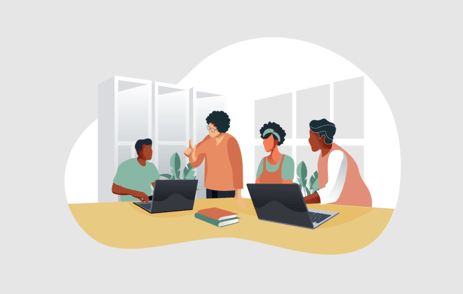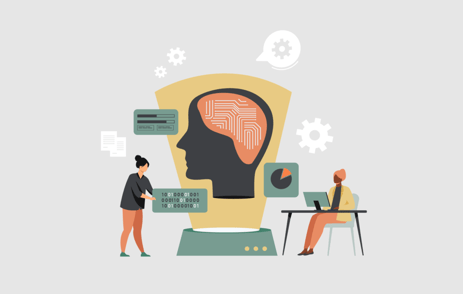Almost a year ago, we all made a rapid shift to remote work. Looking back on it, I’m actually quite impressed with how so many organizations turned on a dime and made it happen with relatively little disruption. I’ll be frank: I didn’t have “organizations will make a huge change rapidly and effectively” on my 2020 bingo card. Or any year, for that matter.
And, of course, we are all continuing to adjust to this new reality. Some are moving back to the office (but with new rules and behavior patterns). Some are staying all or nearly all remote. We’re continuing to adjust how we do the work, how we deliver things to our customers/stakeholders, and even what our core value proposition is.
There is one area, however, where I see organizations struggling, and that’s adapting to the sudden—and lasting—decrease in human connection. In the early lockdown, it was more acute. I remember venturing out to the drug store last year and feeling like my neighborhood was a ghost town. Back then, the ONLY way I could talk to people with whom I have deep relationships was via phone or video chat. I was literally not allowed to visit my aging mother (still have not been able to, but hopefully soon). As an introvert, I can certainly handle some alone time, but even I was noticing the lack of connection.
Since then, different phases of reopening have allowed us to be around more humans (particularly outside), and we’re all getting better at video calls, but in the end, we’re still suffering from a decrease in human connection. We’ve lived our whole lives with a certain degree of “closeness” to other humans (even strangers), that is now conspicuously absent. And we’re feeling it.
Anecdotally, I’m hearing about more conflict in the workplace. I hear about people not feeling included, and not being cared for. I feel like trust is on the decline. Part of all that can be linked to our adjusting to working remotely (I would argue that it is literally harder to include more people in decision making when every meeting has to be on zoom). But I think part of it is all of us releasing some of the pressure that builds up due to lack of human connection. And as I said, some of that may be here to stay. Here are some tips for adapting to this reality:
Up your conflict conversation game. I know it’s harder via zoom, but we need to have better conflict conversations, more often, and earlier on in the conflict. This is huge for releasing pressure before things build up. Learn how to give really clear feedback, even if it’s negative. Learn how to get to the root of misunderstandings rather than just staying on the surface.
Take (and give) more breaks. This is also a tough one, because from what I hear, everyone is suddenly working a lot more hours, but I’m not sure that’s sustainable given our human connection deficit. We need more time with the few humans that we CAN be around, so find ways to make that happen. One client gave all employees an extra day off to unplug—as in they literally were not allowed to check email or be online.
Find safe ways to add presence. I can’t get specific here, because I think we all need to watch the science as it unfolds, but the sooner we can find ways to literally be in each other’s physical presence, the better (even briefly). I’m a cyclist, and one of my riding buddies happens to be a medical scientist (which is quite handy), and based on his expertise and advice, we found ways to ride “together” safely (again, being outside is a huge part of that), and I can tell you it made a huge difference to have that in-person experience with my friends.
Acknowledge the challenges. There are times where should be clear about the current absence of human connection. Sadly, a lot of organizations will be laying off employees, which I know leaders would rather do face-to-face. Or post layoffs, they might get the team together for some team-building or group processing. Tell your people that you wish you could do that, that you wish you could meet that human connection need in this challenging moment. Acknowledge that this will be harder to work through in a remote environment. Sometimes naming the difficulty can release some of the pressure.
Be patient. This is probably not the best time to rush to judgment about your colleagues and co-workers. If there are conflicts or bumps in the road, remember that we’re all feeling this right now. If someone seems to be behaving “out of character,” it’s probably safe to assume that it is temporary rather than a big shift in their character.
In our aggregate culture assessment data, the question that has the strongest correlation to the “would you recommend someone to work here” question is “My company cares about my health and welfare and shows it.” And that’s based on data that is all pre-Covid; if anything, that correlation will become stronger. So how are you reacting to that change? We should all be looking at how we manage, how we lead, and adapt our practices to the current reality. That’s the work of culture. That’s culture-based management.
This article was originally published by PROPEL, on Feb. 24, 2021.

March 8, 2021


